Using data from the National Health Interview Survey, I am hoping to analyze the average marginal effect a variety of demographic factors have on the predicted probability of having hypertension using a logistic regression. To clarify, by average marginal effect I mean that I want to be computing the marginal effect at the mean of every X (like the STATA output).
My issue is that I have both binary and continuous independent variables, but from what I've read, it doesn't make sense to evaluate the binary variables at their mean, since it's either a 0 or 1. I don't know how to make the regression run where I can evaluate the continuous variables at their mean, but not the binary ones. Here is the code I have so far.
#Here I create a data frame of the means of the continuous variables
mean_df=df %>% select(c(AGE,BMICALC,FAMSIZE,YEARSONJOB,HOURSWRK)) %>% summarise_all(mean)
#here is my regression, variables here not in the line of code above are binary
logit_margin_diabetes <- glm(DIABETES~scale(AGE)+scale(IMMIGRANT)+scale(HOURSWRK)+scale(BELOW_TWICE_POVERTY)
+scale(BMICALC)+scale(FEMALE)+scale(FAMSIZE)+scale(EDUC_1)+scale(EDUC_2)+scale(EDUC_3)+
scale(EDUC_4)+scale(SMOKE)+scale(MARRIED)+scale(HISP)+scale(AFR_AM)+scale(WHITE), data = df,family="binomial")
#This is the stage where I want to apply the logit so it is evaluated at the means of the continuous variables. But I don't know what to do about the binary variables
marg_mean<-margins(logit_margin_diabetes,data=mean_df)
summary(marg_mean)
Apologies, it was difficult for me to produce and MRE, since I don't know of a dataset in R that has this sort of information. But if anyone can provide any advice that would be greatly appreciated! Thanks.
Here is the modified output per the comment below. But I would like the output to show the SE,AME,and p values too
margins(logit_margin, at=list(AGE=35.93349,BMICALC=26.90704, FAMSIZE=2.495413, YEARSONJOB=4.538336,
HOURSWRK=32.53768,IMMIGRANT=1,
BELOW_TWICE_POVERTY=1, FEMALE=1,
EDUC_1=1,EDUC_2=1,EDUC_3=1,EDUC_4=1,
SMOKE=1,MARRIED=1,HISP=1,
AFR_AM=1,WHITE=1))
summary(marg_mean)
This is a photo of the new output I see after running summary(marg_mean)
